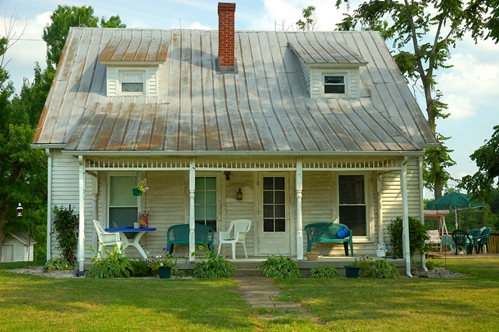Why old buildings sometimes circumvent physical cabling
Mar 14, 2016
 In most buildings, laying down cables is the best option for establishing and improving connectivity. It's usually more robust than wireless options, is harder to take offline and is generally more secure and reliable.
In most buildings, laying down cables is the best option for establishing and improving connectivity. It's usually more robust than wireless options, is harder to take offline and is generally more secure and reliable.
So, with all these benefits in mind, why do some companies decide that physical cabling is not for them? Here are a few reasons:
1) It can be expensive, especially for redundancy
For starters, putting in any new physical infrastructure is bound to be expensive, and this is definitely the case with network cabling. TechTarget contributor John Spindler noted that the costs of obtaining and installing coaxial cabling can easily run around $4.50 a foot in the U.S. The University of Texas at Austin recently put the low-end price of installing two data cables in a building at close to $650.
These estimates are all under the assumption that it would be a straightforward wiring job. A multitude of variables could further drive these prices up, especially in older buildings that lack IP infrastructure and where items cannot easily be moved. Plus, if additional cables need to be laid in order to better ensure redundancy, then costs can be double or triple initial estimates.
2) It can be hard to future-proof
The owners and operators of older buildings know better than most how technologies and tools come into and out of fashion. After all, what constituted a state-of-the-art manufacturing facility in 1950 would be woefully out of date today. Thus, many older buildings want a network that works for them today and in the future. Unfortunately, as TechRepublic contributor Scott Lowe has noted, this can be hard to accomplish.
For one, the amount of bandwidth a business needs is likely to skyrocket over the next few years. Unless a provider is willing to scale with the organization, this may mean installing more than is necessary now to be ready for future demand –although even then it may not be enough, meaning a lot was paid upfront even though future demand was not met. In addition, as cabling technologies advance, what is put in place in the present could be eclipsed within just a few years.
3) Installation is especially disruptive with physical cabling
In active businesses, installing anything new can mean that everything needs to be shut down for a few minutes or hours while the crew is in place. This is especially true of more infrastructure-intensive projects involving a lot of physical cabling. Unless installation can happen during off-hours, assuming the operations are not 24/7, then that means a lot of downtime. Considering that even planned downtime, even when it just affects a small number of people, can be prohibitively disruptive and expensive, it's something that most businesses try to avoid at all costs. Is it worth it to even shut down part of your operations for a few hours to get new cabling when a wireless option can often be implemented with far less disruption?
4) It can be time-consuming
Putting new cabling in place is hardly ever a short affair. While deployment times can be relatively minimal in newer construction, according to Spindler, this is hardly ever the case in older buildings. In addition, he said that local and industry-specific ordinances could limit how much access an installation professional has and how long they can be at a site for a given time.
Furthermore, as UT Austin Information Technology Services noted, some sites will need to be tested for environmental contaminants like lead and asbestos before major work can be started. In older buildings, the likelihood of these being found are much higher than in newer buildings.
All of this means that installing cables, in addition to being disruptive, costly and hard to future-proof, can be a lengthy affair in older structures. With this in mind, what are the owners and operators of older buildings to do?
The answer to these cabling conundrums can be wireless mesh networking. This is a route that Sunlight Service Group pursued with great success.
Case study: Sunlight Service Group
Originally founded in the 19th century, Sunlight Service Group is one of the biggest laundering service providers in the United Kingdom. The company, which is owned by Berendsen plc, is responsible for supplying and cleaning the uniforms, towels and other linens in use at hundreds of restaurants, hotels and other businesses in Europe.
When it came time to update the network infrastructure across its dozens of locations, Sunlight Service Group ran into a few key problems. For one, since the company has been around for more than a century, it operates some buildings that are almost as old as the business itself. In addition, the organization didn't want to disrupt business too much by installing new wiring, as temporarily moving some of the extremely large washing machine units in some locations would have been far too cumbersome.
"Our laundries are large industrial plants, and as we have been in the industry for over 100 years, some of the properties are quite old," said Jeff Roberts, Sunlight's Applications Support Manager. He added, "Cabling is difficult, expensive, disruptive and inflexible."
To address their connectivity issues without having to resort to new cabling, Sunlight instead implemented a wireless mesh network in multiple facilities. They found that having between three and 13Firetide HotPort nodes in each location was enough to provide connectivity throughout the entire structure. Their own IT team was able to quickly set everything up, and they can monitor all of the nodes using Firetide's HotView Pro Network Management Software.
Old buildings present their fair share of cabling and connectivity problems, but Sunlight was able to address these concerns using a wireless mesh network. Contact Firetide today to learn more about your available options.

